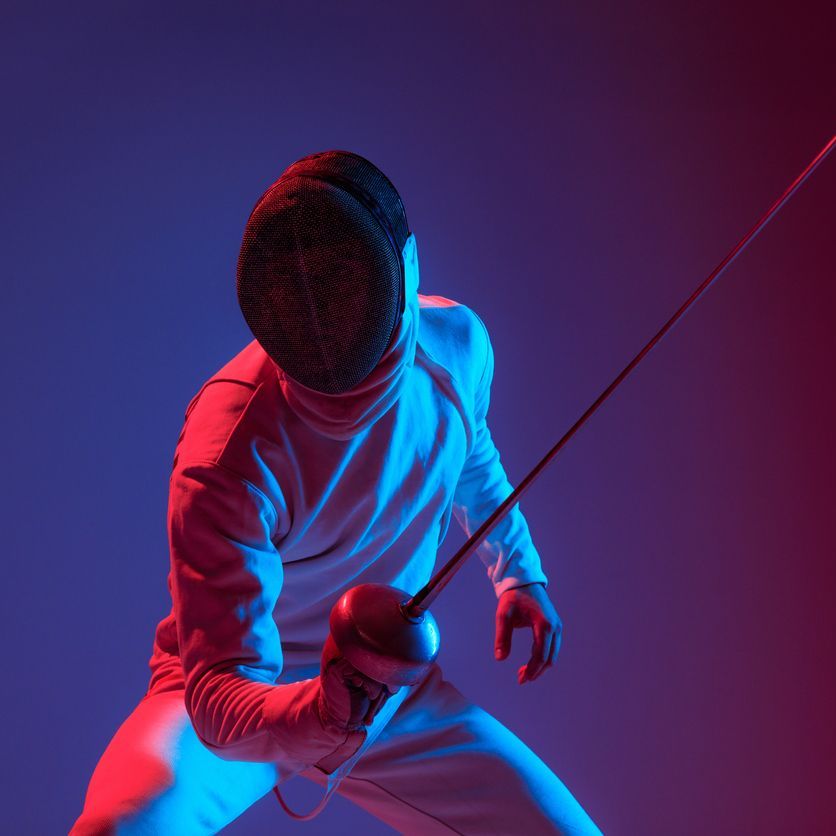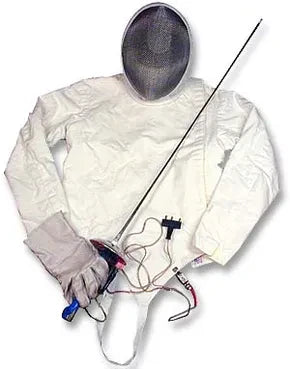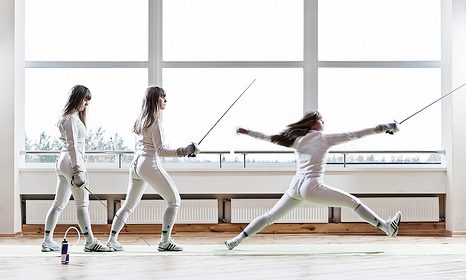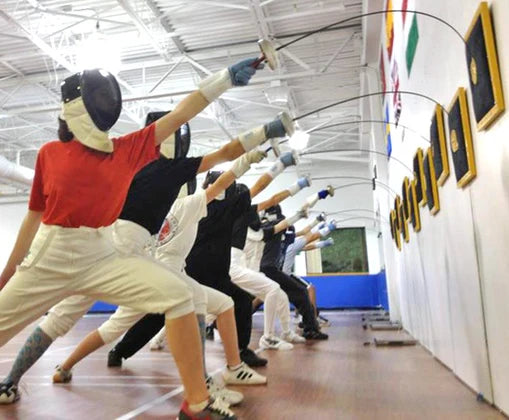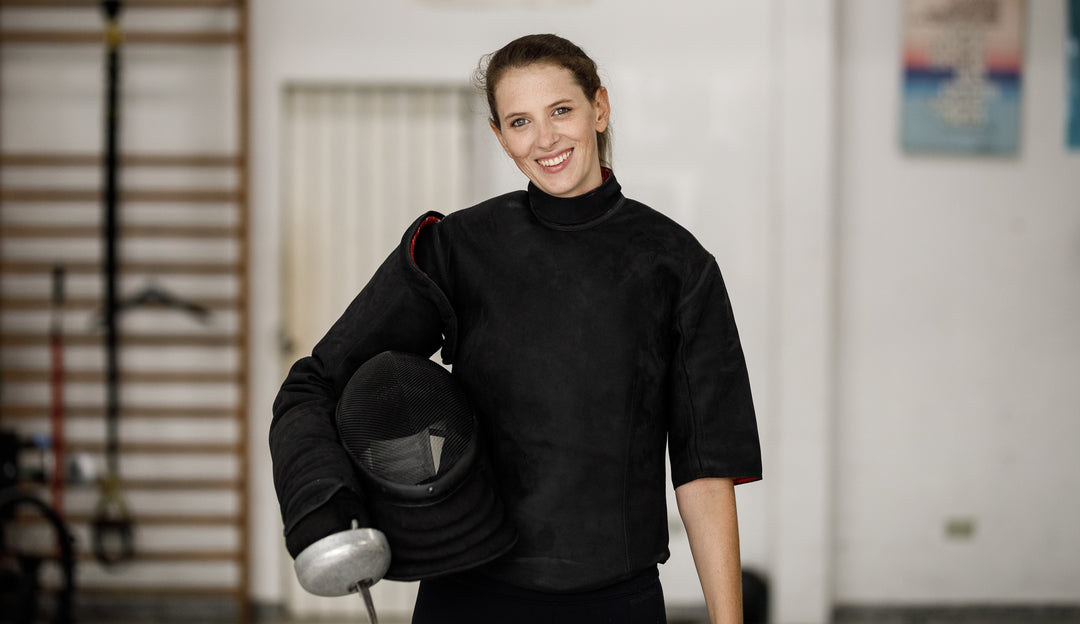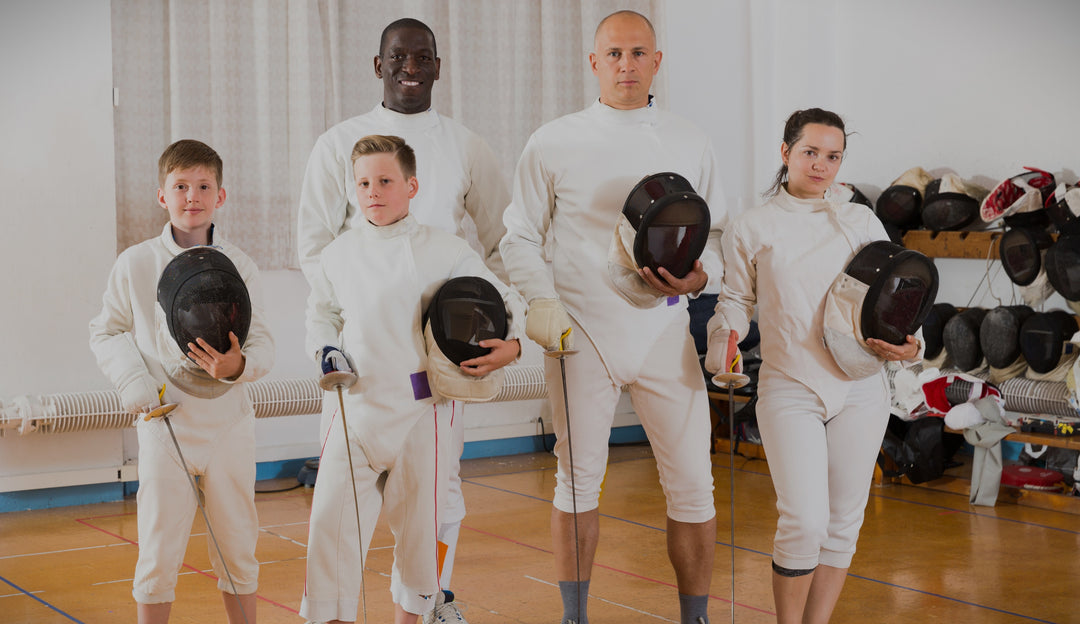So, you’re ready to pick up a sword. Getting started in fencing is simpler than you might think. The first step is to find a local club, choose one of the three weapons—Foil, Épée, or Sabre—and sign up for a beginner's class.
Don't worry about buying a full set of gear right away. Most clubs have all the rental equipment you'll need, so all you have to do is show up, ready to learn the fundamentals of this incredible sport.
Your First Step Into the World of Fencing
People often call fencing "physical chess," and it’s a perfect description. The sport is an intense blend of raw athleticism and sharp, strategic thinking. Unlike most team sports, success on the fencing strip comes down to you and you alone—your ability to outsmart and outmaneuver a single opponent.
It’s this unique combination of brains and brawn that makes fencing so rewarding. You’re not just training your body; you’re sharpening your mind with every bout. And the journey all begins with understanding the three distinct disciplines of the sport.
Choosing Your Weapon: Foil vs. Épée vs. Sabre
Your first big decision is which weapon to focus on. Each one—Foil, Épée, and Sabre—comes with its own unique set of rules, target areas, and tactical flavor.
Many fencers start with Foil. Its "right-of-way" rules, which dictate who has the priority to attack, are fantastic for building a strong tactical foundation that will serve you well no matter which weapon you ultimately stick with.
To help you get a feel for the differences, here’s a quick breakdown:
| Weapon | Target Area | Right-of-Way Rules | Commonly Described As |
|---|---|---|---|
| Foil | Torso only | Yes | The disciplined, foundational weapon |
| Épée | Entire body | No | The strategic, patient duel |
| Sabre | Waist up | Yes | The fast, aggressive slashing weapon |
Each weapon offers a completely different experience. Épée is a patient, calculated duel where timing is everything. Sabre is an explosive burst of speed and aggression. And Foil sits somewhere in the middle, demanding both precision and tactical cunning.

As you can see, fencing delivers some serious physical and cognitive benefits, making it an excellent choice if you're looking for a new athletic challenge that does more than just get you sweating.
Fencing is more accessible than ever, thanks to its growing popularity and the community built around it. It’s a sport where you lose far more than you win, and that's precisely where the growth happens—in learning from every single touch.
Finding the Right Fencing Club and Coach
Once you've got a weapon in mind, your next big step is finding a place to learn. The right club is so much more than a gym with swords; it's the community and support system that will shape your entire fencing journey. This is where you’ll find the coaching, practice space, and training partners you need to actually get good.
What to Look For in a Club
When you visit a potential club, get a feel for the atmosphere. Is it laid-back and welcoming, or is it buzzing with intense, competitive energy? Neither is inherently better, but one will definitely be a better fit for you and what you want to get out of the sport.
Try to observe a beginner class. You'll learn a lot just by watching. Pay attention to the quality of the instruction and the student-to-coach ratio. A good coach is engaged and gives individual feedback, even in a group setting. Your coach is your single most important guide when you start, so finding someone whose style clicks with you is absolutely critical for staying motivated.
The right club environment makes all the difference. A recreational club might focus more on group fun and general fitness, while a competitive club will have structured programs aimed at tournament performance. Knowing what you want will help you choose wisely.
Before you sign up anywhere, it pays to ask a few key questions to really understand how the club operates. For a deeper dive, check out our guide on how to find a great fencing club.
Here are a few essential things to ask:
- What are the fees and membership structures? You need to know the full cost, including any sneaky hidden fees for things like registration or equipment.
- Do you offer beginner-specific programs? A dedicated class for newcomers is the best way to build a solid foundation without feeling overwhelmed.
- What is your equipment rental policy? Most clubs rent gear to beginners, which is perfect when you're just starting and not ready to buy a full kit.
- What is the club's coaching philosophy? This question gives you a ton of insight into their approach to training and how they develop their fencers.
Getting Your Essential Fencing Gear
Stepping onto the fencing strip means you'll need some specific protective gear, but don't let the initial thought of cost scare you off. When you’re just starting out, almost any club worth its salt will have loaner equipment to get you through your first few classes safely. This is absolutely the smartest way to begin.
This trial period gives you a chance to decide if you’re really into the sport before you drop any serious cash.
Your First Purchases
After a few months of using the club's gear, you’ll probably be ready to start buying your own. The main reasons? Comfort and hygiene. Trust me, having your own stuff makes a difference. Most fencers tend to buy their equipment in a fairly predictable order.
Here’s the typical path most beginners take:
- Glove: This is almost always the first purchase. Having your own glove is just way more comfortable—and hygienic—than sharing a sweaty club one.
- Mask: A personal mask means a perfect fit, which is a huge deal for both safety and just being able to see what you're doing without constantly adjusting it.
- Jacket & Plastron: The jacket is your main body armor. A plastron is a half-jacket you wear underneath, giving you an extra layer of protection over your weapon arm and torso where you'll get hit most.
- Weapon: Once you've figured out if you're a Foil, Épée, or Sabre person, getting your own weapon lets you get used to its unique weight and balance. It starts to feel like an extension of your arm.
Don’t rush to buy everything at once. Ease into it. Buying piece by piece spreads out the cost and ensures you’re getting gear that actually fits your needs as you get better.
Lots of vendors offer beginner kits that bundle all the essentials for a discount, which can be a great way to save some money. Another pro tip is to ask around your club—sometimes fencers who are upgrading will sell their old gear for a good price.
For a deeper dive, check out our guide on what gear beginners need to start fencing. It'll help you get properly kitted out without breaking the bank.
Mastering the Fundamentals: Stance and Footwork
Before you even think about crossing blades with someone, your success starts with your feet. Fencing is a sport built from the ground up, and a solid stance is the non-negotiable foundation for every move you’ll ever make. Without good balance and control, even the most brilliant attack will fizzle out.
Think of the proper fencing stance—the en garde—as a coiled spring. It’s a position of pure readiness, holding potential energy that you can unleash into explosive movement at a moment's notice. To get into it, place your feet about shoulder-width apart, with your lead foot pointing forward and your back foot turned out at a 90-degree angle.
Finding Your Balance
Nailing the perfect en garde is all about striking a balance between stability and mobility. Bend your knees until they are roughly over your toes, keeping your back straight and your weight centered evenly between both feet. This low center of gravity is what gives you the power to move quickly without tipping over.
Your arms are just as important. Your weapon arm should be bent, holding the sword out toward your opponent, while your non-weapon arm is raised behind you to act as a counterbalance. It’s going to feel a bit strange at first, but this posture is the secret to both a strong defense and a lightning-fast offense.
The en garde stance isn't just where you start; it's your home base. Every single movement begins and ends here. Mastering it means you’re always ready to attack, defend, or counter-attack with total efficiency.
The Core Movements
Once you feel comfortable in your stance, you can start drilling the three fundamental footwork actions that make up 90% of movement in a fencing bout.
- The Advance: This is your basic forward step. Lead with your front foot, then immediately follow with your back foot to return to your en garde stance. Simple.
- The Retreat: This is just the advance in reverse. Lead with your back foot to move away from pressure, then bring your front foot back to reset your stance.
- The Lunge: This is your primary attacking move. You explode forward off your back leg, extending your weapon arm first, to cover distance and score a touch. It’s the money maker.
These movements are the vocabulary of fencing. You can practice them anywhere you have a bit of space by just moving back and forth along a straight line. For more in-depth tips and drills, check out our other articles on the Fencing Club blog. Consistent practice is what builds the muscle memory you need to make these actions feel like second nature on the strip.
What to Expect in Your First Fencing Class
Walking into a fencing club for the first time can feel a bit intimidating, but knowing what a typical beginner class looks like helps a lot. And don't worry—you won't be thrown into a duel on day one. The initial focus is always on building a safe and solid foundation.

Most classes kick off with a dynamic warm-up designed to get your blood flowing and prep your body for fencing-specific movements. Think jogging, skipping, and agility drills that build up your coordination and stamina.
You can also expect to spend a good chunk of the class on footwork. You'll be practicing the advance, retreat, and lunge without even holding a weapon. It might feel a little repetitive, but trust me, this is the most crucial part of learning how to fence correctly.
From Drills to Blades
After the warm-up and footwork, you’ll probably move on to partner drills. This is where you’ll finally get to hold a weapon! Your coach will walk you through the most basic blade actions, like the parry (a defensive block) and the riposte (the counter-attack right after a parry). These first exercises are slow and controlled, all about proper technique, not speed or scoring.
It’s completely normal to feel a bit clumsy at first. Everyone does. A common anxiety for newcomers is the fear of getting hit, but the protective gear is incredibly effective, and every beginner drill is designed with safety as the top priority.
Remember, your first class isn't about winning or looking like an expert. It’s about listening to your coach, learning the etiquette of the strip, and getting comfortable with the fundamental movements. Everyone in that room started exactly where you are.
Communicating is key, so don't be afraid to ask questions if you're unsure about a drill or how to hold the weapon. Fencing has a strong culture of respect—a simple salute with your weapon to your opponent before and after a drill is standard practice.
Just show up in comfortable athletic clothing, be ready to learn, and embrace the process.
Frequently Asked Questions About Fencing
Jumping into a new sport always sparks a few questions. When you're just getting started with fencing, it’s totally normal to wonder about everything from your fitness level to whether you’ve missed your window to begin. We’ve pulled together the most common questions we hear from aspiring fencers to give you the straightforward answers you need.
Am I Too Old to Start Fencing?
Not a chance! Fencing is a true lifelong sport, with active communities for every age group. You’ll find that many clubs have dedicated adult beginner classes, and there’s a super active veteran circuit for fencers aged 40 and up.
The beautiful thing about fencing is that it rewards sharp strategy and precise timing just as much as it does raw athleticism. You might not have your sights set on the Olympics, but the benefits—like quicker reflexes, better balance, and tactical thinking—are up for grabs no matter when you start.
Do I Need to Be in Great Shape to Begin?
You definitely don't need to be a seasoned athlete to walk into your first fencing class. Honestly, fencing is an incredible way to get in shape. The sport is great because it meets you right where you are and builds you up from there.
Your first classes will focus on the core movements, and you'll naturally start to improve your:
- Cardiovascular health from the constant, dynamic movement.
- Leg strength and endurance just by holding the en garde stance.
- Overall stamina as you get into drills and eventually start bouting.
Your fitness will grow right alongside your fencing skills.
The biggest myth out there is that you have to be fit before you start. The truth is, fencing makes you fit. The training itself is the workout.
How Long Does It Take to Get Good at Fencing?
That's the million-dollar question, and it’s a bit different for everyone. But a rough timeline can help set some realistic expectations. Within your first few months of consistent practice, you'll likely feel pretty comfortable with the basic footwork and blade actions.
Getting to a point where you feel confident enough to sign up for a local tournament? That could take anywhere from six months to a year. Real mastery, though, is a lifelong journey. The trick is to focus on small, steady improvements and just enjoy the process of learning instead of getting hung up on some far-off goal. The fun is in getting a little better each week.
Is Fencing a Safe Sport?
Yes, fencing is one of the safest modern sports out there, and that’s almost entirely thanks to the highly specialized protective equipment. Every single piece of gear, from the reinforced mask down to the padded jacket and glove, is engineered to prevent injury.
You might go home with an occasional bruise—fencers often call them a "fencing kiss"—but serious injuries are incredibly rare. This is especially true when you compare it to mainstream contact sports like soccer or basketball. Any reputable club will have strict safety rules to make sure everyone can train with confidence. For more detailed answers, you can always check out our complete fencing FAQ page.
At Fencing Club, we provide top-quality gear for every stage of your journey, from your first lesson to the competitive strip. Explore our beginner sets and equipment today.


